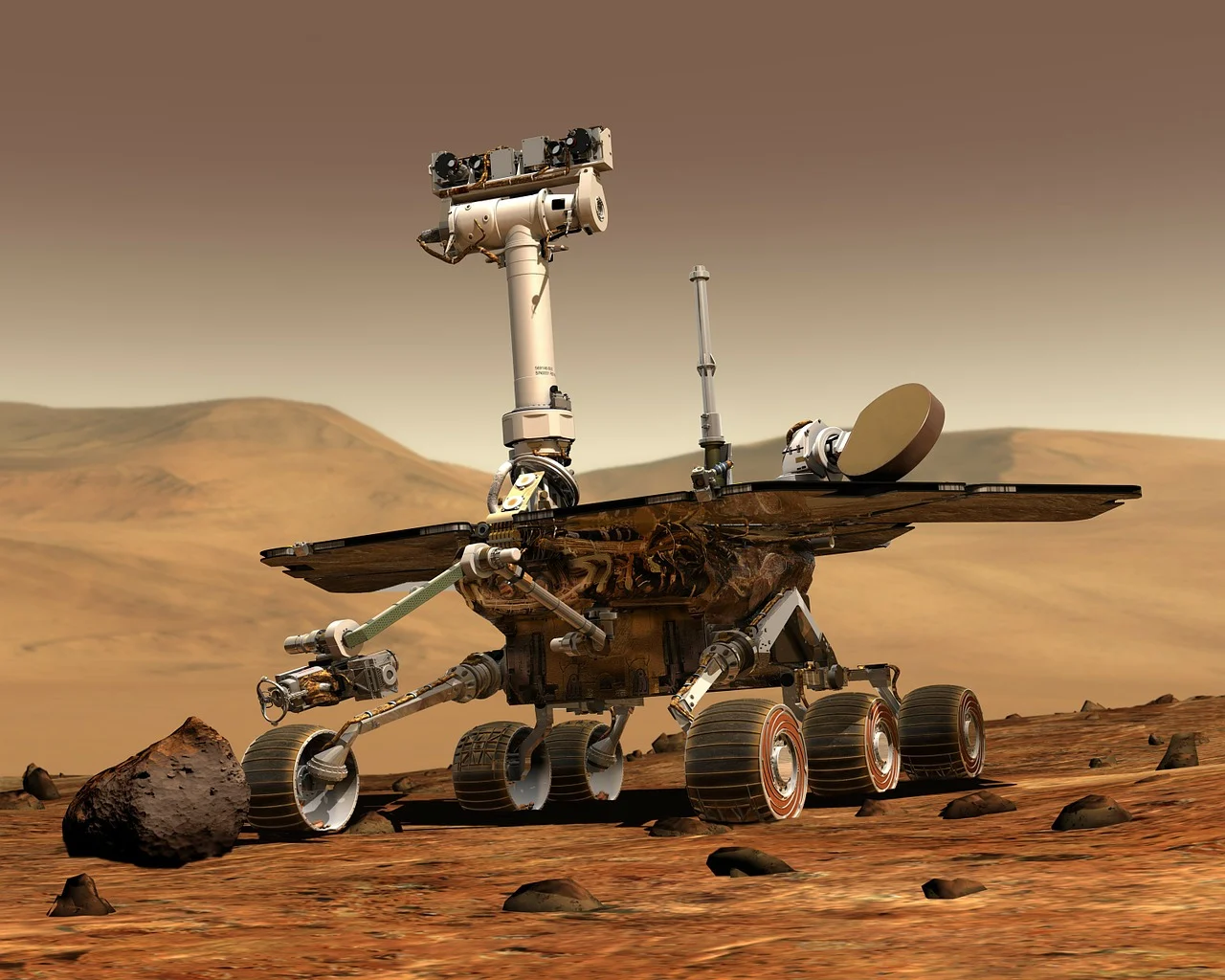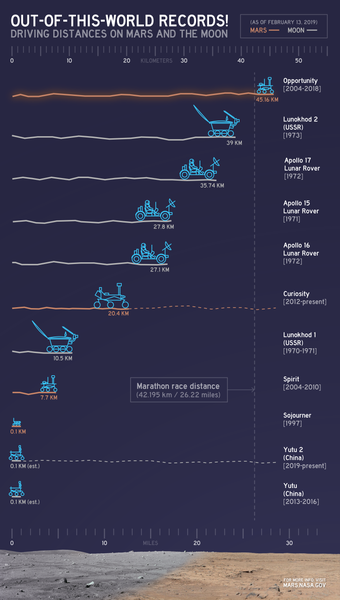Mars Rover / Space technology

Image source
Introduction
I started from the following philosophy, since the existence of man felt the need to seek to improve his quality of life, over time he began to communicate and transmit information with knowledge, and then design instruments to work and search for food over time in Each culture was improving each of its activities thanks to the fact that technology is extremely useful and necessary in our times. But the conquest by the universe and the search for a new frontier of knowledge of the planets within the solar system, great progress has already been made, due to new space technologies to reach that planet, as it was done on the moon and on Mars.

Comparison of distances driven by various wheeled vehicles on the surface of the Moon and Mars, Wikimedia Commons, Autor: NASA / JPL-Caltech
At various points in our history and also as part of humanity, our progress comes from trials and errors, where the consequences of trips to the Moon and the studies of Mars are associated with technological development, since we have to To see them more than a limitless frontier by the application of a technique, it is applied to solve problems by executing knowledge in the field of science. Not all truth is in sight we are always surrounded by mystery and unknown, that is why the efforts can involve both human beings traveling in spacecraft, also satellites with telemetry resources or remote-guided probes sent to other planets, the most interesting thing is Knowing the science that studies space flight and the technology related to it are called astronautics.
A Mars rover is a motor vehicle designed with space technology, to fulfill various missions to travel the surface of the planet Mars upon arrival, this space vehicle has fixed landing modules, it also has a design that allows it to be placed in sunny positions to withstand the winter months, your exercise or running action is a remote robotic vehicle control. The first probe to visit Mars was the Soviet Marsnik 1, which passed 193,000 km from Mars on June 19, 1963, without being able to send information.
There have been four successful robotically operated Mars rovers, all managed by the Jet Propulsion Laboratory: Sojourner, Opportunity, Spirit and Curiosity as of January 24, 2016, NASA reported that current studies on Mars out of curiosity and Opportunity, as the least expected of the car-sized Mars rover happened, all communications with Earth ceased in June 2018, when a planet-wide storm engulfed Mars. Now, after an incredible 15 years of exploring the surface of the Red Planet, to NASA the scientific details of each rover depend on the equipment they carry. The main objective is the analysis of rocks and soils that may contain evidence of the presence of water in any state on the Martian surface.
As part of its technological design, this space vehicle has the ability to turn one of its front wheels to pulverize the ground and is designed to remain still when the excavator wheel is turning. In addition to this data, it can also make a total turn of 360 °, thanks to its 6 wheels mounted on a rocking-type suspension that guarantees that the 6 wheels will be in contact with the ground when moving on rough terrain, where each wheel has its own motor.
In reference to its energy source, it has solar panels that are fully illuminated, they generate approximately 140 W for up to 4 hours per Martian day depending on the Sun, sporadically this system because it takes approximately 100 watts to drive itself, in order to be able Keep charged its two rechargeable lithium ion batteries with a weight of 7.15 kg, taking into account that the time said bacteria will stop working due to its wear and tear in its useful life. It also has an operating system as part of its technology, a 20 MHz RAD6000 CPU, which is protected against radiation with 128 MB of DRAM memory with error detection and correction based on 3 MB of EEPROM, it is fascinating as the Advances in space technology seeing enough changes in knowledge and the development of different assets from all over the world as its culture.
Memory of the Symposium. Evaluation and Perspectives of the Space Age in ...
By INEGI, 1987

@tipu curate